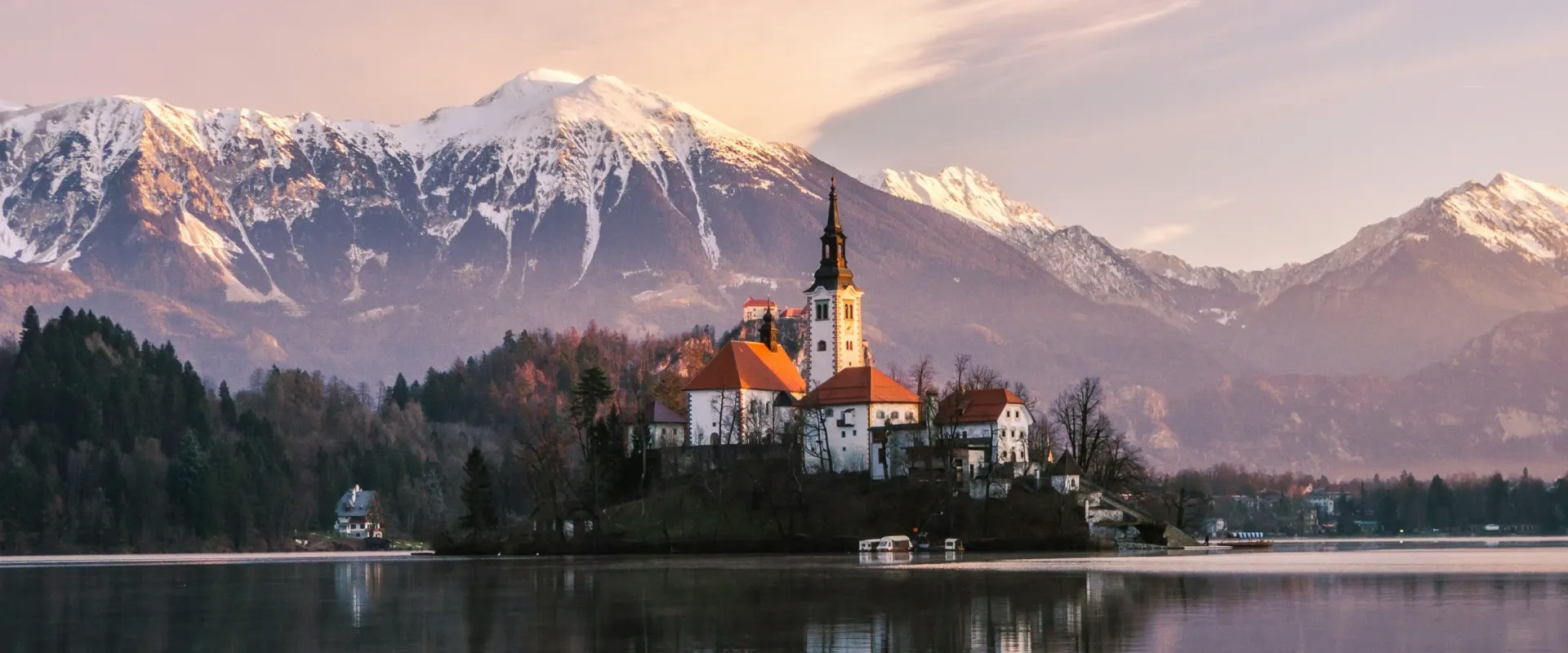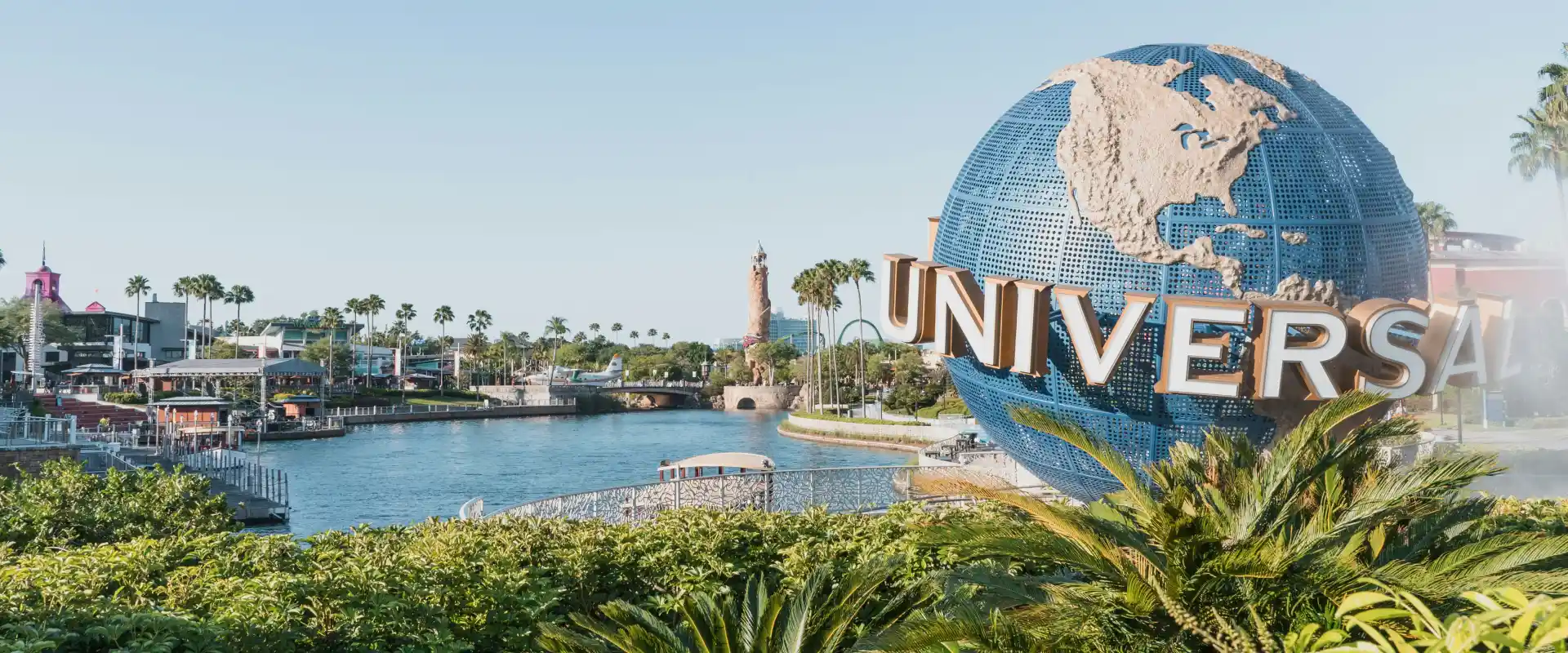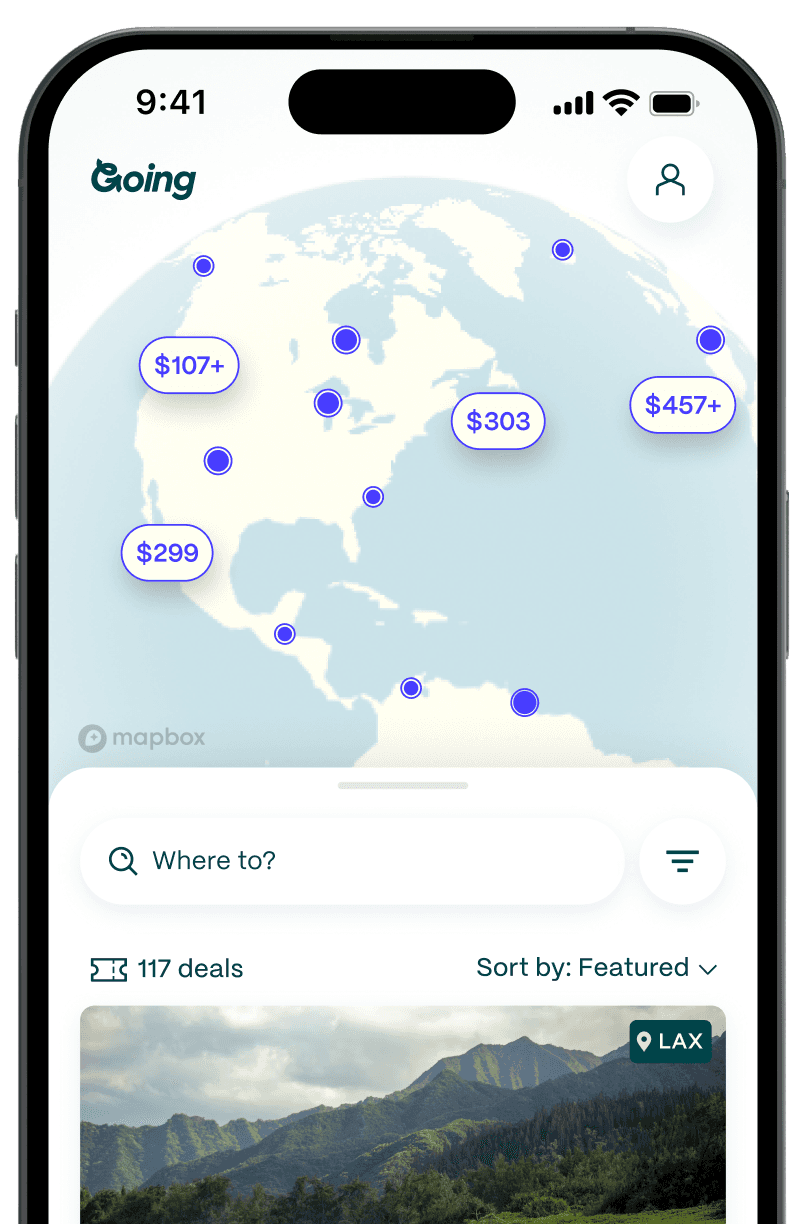
Slovenia: The Small European Country With 14,000 Caves Underneath
It wasn’t long ago that just about every magazine was calling Slovenia a “hidden gem.” Today it’s well known as a top European destination, whether for a weekend break or a two-week deep dive, during which you can feel you’ve seen it all.
Slovenia is small—about the size of Maryland—but is geographically diverse and spectacular enough to have been the setting for many films and series, from The Chronicles of Narnia: Prince Caspian (filmed in the Soca Valley) to The Witcher series (with scenes set at Predjama Castle, Postojna Cave, and Kranjska Gora).
The most culturally and economically developed of the former Yugoslav republics, Slovenia has been independent since 1991 and is one of the friendliest and easiest places to visit in the region.
Enter the fairytale

Visitors often comment that Slovenia looks like the backdrop to the fairytales they loved as a child. All those cliff-top castles, mountain huts, and dragon statues will do that.
The most photographed spot is Lake Bled, which could be the setting for a Disney movie: A castle is perched atop a sheer cliff above a perfectly blue alpine lake. And within that lake, on the only island in the country, sits a church. It’s so idyllic you’d think it’s a stage set, but it’s been a beloved wellness holiday destination since the 19th century. To learn more, you can listen to The Bled Podcast (which I host).
If you want to feel like you’re in Middle Earth, then head up to Velika Planina. This alpine pasture has hosted hundreds of cows and a unique culture among herdsmen since the Iron Age and continues to do so. On a flat-topped mountain set 5,000 feet above sea level, right up among the peaks of the Alps, you’ll encounter locals wearing traditional herdsman’s cloaks (made of strips of pine bark, the resin of which wicks off water), be outnumbered by cows that drift like moving sculptures, taste breast-shaped cheese made only here, hike to a cave that contains snow all year round, and learn why two-legged stools are good for watchmen with an eye out for wolves. (You can even stay in a cottage for a night or several days.)
You can’t get far in a land of fairytales without encountering castles, and Slovenia has plenty of them—more than 500 still stand, but prior to the World War II, there were hundreds more. It seems that there’s a grad (castle) or ruin of one on every hilltop, and many of them have provided settings for films. Most recently, Predjamski Grad, built into a cliff face in the 16th century, appeared in The Witcher series on Netflix. You can buy a combined ticket to Predjamski Grad and Postojna Cave (more on that below), as they are within a few kilometers of each other.
What lies beneath

Much of Slovenia (43%, in fact) sits on a bed of karst, porous limestone, which means that underground Slovenia is full of caves—around 14,000 of them and counting. The most famous and developed for tourism is Postojna, a UNESCO site with the world’s first train built to explore a cave (installed in 1872) that winds you through 14 miles of incredible caverns. Located just a half-hour drive from Ljubljana off the highway toward the Adriatic, it’s easy to access and truly amazing, though quite busy with tourists. It is also home to a unique creature, the olm or “human fish.” This blind cave-dweller looks like an albino salamander with translucent skin and was once thought to be a baby dragon.
In Snežna Jama (Snowy Cave) near Luče, you’ll find ice and snow all year round, as this cave maintains the same chilly temperature and humidity winter and summer, insulated by the earth above it. This is in the Logar Valley, one of the most photogenic valleys in the world, tucked between ridges of the Kamnik-Savinja Alps, about 90 scenic minutes from the capital.
The most dramatic of all those 14,000 caves may be Škocjan, a network of caverns you hike through, which brings to mind the Mines of Moria from Lord of the Rings. There are sheer drop offs, an underground lake, and natural stone bridges to cross. It’s farther along the highway from Ljubljana to Koper on the coast and feels rawer and pleasantly less-developed than Postojna.
Evidence of the karst system comes in the form of Cerknica, Slovenia’s “disappearing lake.” Noted by ancient historian Strabo, for half the year, this is Slovenia’s largest lake, but it drains through the limestone at its base, so in the summer, it is transformed into a meadow before subterranean aquifers make it fill up again.
Ski and swim in the same day

Guidebooks will tell you that Slovenia is so compact, with such diverse geography, that you can ski and swim—on the same day. But I’d lived here for a decade without ever meeting someone who actually did this. So I decided to do it for a Washington Post article. It’s surprisingly easy if you get the season right.
There can be snow in the mountains as late as March, and Slovenia’s many ski resorts are all easy to access. Krvavec resort is only thirty minutes from Ljubljana, and one of the highest ski resorts in the country, Vogel, which looms breathtakingly above the wild, romantic Lake Bohinj, is just ninety minutes away.
The Adriatic coast, with resort towns Koper, Piran, and Izola, is only 90 minutes from Ljubljana. So I skied at Vogel in the morning, stopped in Ljubljana for lunch, and then jumped into the Adriatic in Koper in the afternoon. The Adriatic was a wee bit chilly, but this feat is certainly doable. You could also try some other polar opposites in a day, like climbing a mountain that soars more than 6,000 feet skyward and spelunking in an underground cave.
Unusual eats

Slovenia is a proper foodie destination, with its modern culinary scene led by Ana Roš, the 2017 World Female Chef of the Year and star of a Netflix Chef’s Table episode, and Janez Bratovž, considered the godfather of fine dining in ex-Yugoslavia. The highest of the high-end fine dining is Roš’s three-star Michelin restaurant, Hiša Franko, while Bratovž’s JB in Ljubljana was among the first to introduce nouvelle cuisine, carpaccio, and medium-rare steaks to Slovenia, and it remains at the pinnacle of quality while coming in at a more reasonable price point.
Slovenian food brings together Austrian foods (think sausages, sauerkraut, pork chops, and cream sauces) with the cuisine of neighboring Italy (pasta), Croatia (roast suckling pig and cevapcici, the “burger of the Balkans,” which are like oblong meatballs), and Hungary (goulash). But you can also find more unusual fare.
For example, in the northern town of Kamnik (once a favorite hunting ground of Yugoslav nobility), some area restaurants still serve soup with meat from the chamois, a goat-antelope native to Europe. In Polhov Gradec (the name of which might be translated as Dormouse Manor), there’s dormouse. This used to be a basic protein, eaten fried or in stews, and while I’m not sure dormouse will catch on as a new foodie trend, it’s certainly worth trying. And in Zasip, a village five minutes from iconic Lake Bled, you can take a cooking class (organized with the Bled Tourism Board) with Bojana Pipan, a local grandmother who preserves a centuries-old tradition of cooking with snow pears.
In the late 1700s, Habsburg Empress Maria Theresa decreed that all landowners had to plant apple and pear trees to stave off starvation. Snow pears, in particular, are hearty and survive harsh winters. At some point a few hundred years ago, the villagers of Zasip were on the brink of starvation, having run out of staple grains like wheat, barley, and buckwheat. But they still had lots of snow pears. They developed a technique for grinding them into flour, and Bojana continues to teach a new generation how to bake anything you can think of, from bread to cake, with snow pear flour.
Bees and bears

Slovenia is one of the relatively few countries in Europe where it is legal to hunt bears. The government specifies hunting quotas for all animals, and hunters are obliged to cull this set amount each year, to ideally maintain an ecological equilibrium. That means you can find bear on some menus in the form of goulash or as a specialty of bear paw, which is sometimes served at the aforementioned JB Restaurant in Ljubljana. If you’d rather see a bear in the wild than on your plate, there are bear-watching tours, though, of course, sightings are never guaranteed.
Slovenia is also arguably the beekeeping capital of the planet, as it’s where you’ll find the most beekeepers per capita. The world’s second-most-popular bee, the Carniolan Grey, is indigenous to Slovenia and is exported worldwide. It is prized for its calm, unaggressive behavior and heartiness, ideal for temperate to alpine climates.
The godfather of modern beekeeping was an 18th-century Slovenian, Anton Janša, who was made the first professor of beekeeping for the Habsburg Empire. His innovations include not killing bees and destroying hives to harvest honey, which seems obvious today but was outside-the-box thinking at the time.
World Bee Day, a UN-sanctioned international holiday, was proposed by Slovenia and is held each year on May 20—Janša’s birthday. There are many educational apiaries in Slovenia, where you can learn about beekeeping, don a protective suit and handle bees yourself, and, of course, taste a variety of honeys and honey products (like medica, a honey schnapps). You can even sleep with bees as a form of apitherapy.
World-class terroir

You’ll want something to wash down all that food, and Slovenia has you covered. Wine of the highest quality has been produced here since the time of the Roman Empire, but it was modernized throughout Yugoslavia thanks largely to one man, Zvonimir Simčič, who was the director and chief oenologist for Klet Brda, the largest and most important winery in Yugoslavia, situated near the Italian border in Goriška Brda.
Goriška Brda is among the world’s best terroirs and is particularly well-known for an indigenous white wine called Rebula, which was once the most expensive and popular wine among Habsburg aristocrats and is dubbed “gold wine” for its color. The soil of Goriška Brda is of such quality because this was once at the bottom of a prehistoric ocean, so it’s rich in fossil and mineral deposits but low in organic material, conditions optimal for wine. Add to this Goriška Brda’s stunning position, on a series of hills that resemble Tuscany, soaking in the sunlight but also a salty wind from the Adriatic and a cool breeze flowing down from the Alps, and you’ve got a dynamite spot for wine.
That terroir, particularly the salty breeze, is also ideal for making pršut, Slovenian for prosciutto, and šalam, a local type of salami that is dried for only a month, so it’s still soft and luscious when sliced. Some say that the world’s best pršut is made by Uroš Klinec in the village of Medana in Goriška Brda. He makes only around 80 legs per year, and they all sell out immediately to restaurants around the world, but you can still taste it yourself if you visit his restaurant, Klinec Plešivo.
Slovenia’s two other main wine regions are Styria (Štajerska) near Maribor and the Vipava Valley, just a short ride inland from Goriška Brda. You’ll find all the standard wines done at world-class levels (from Cabernet Sauvignon to Pinot Grigio and beyond) but also some indigenous varietals, like the hearty, earthy red called Teran, whites Zelen and Pinela, and semi-sweet Laški Rizling in Styria.
Beer, schnapps, and water

Just about every Slovenian family has a member who makes homemade schnapps, a fermented fruit liquor that is offered as a token of hospitality everywhere you go. You can taste some particularly sophisticated schnapps at Cvet Gora, a glamping plus bed-and-breakfast in Jezersko, right beside the Austrian border.
There, the owner, “mountain mixologist” Tanja Rebolj, who calls herself “the blonde witch” for the wonderful “potions” she makes, forages ingredients by hand and alone, all of them coming from within a kilometer of her house. She makes some 20 schnapps recipes, each one with a medicinal benefit. One has 102 ingredients, and she only makes it every few years when she can get all the components. Another tastes of liquified apple strudel. If you visit Cvet Gora, you can do a schnapps tasting led by her; it’s wise to spend the night, then, since it’s an all-you-can-sip event, and you’ll want to do a lot of sipping.
The medieval town of Kamnik is known for its microbreweries because of its particularly pure, clean, delicious water—the number one ingredient for beer. A hiking trail, the Water Path, in the Kamnik-Savinja Alps links 11 sections and more than 100 streams and springs where you can drink fresh water straight from the ground, some simply as mountain springs, some with water piped in from the mountains and flowing into stone cisterns. The entire route covers 118 miles and also passes four rivers and three lakes.
Dragon City
The teacup-sized capital of Slovenia, Ljubljana, means “beloved,” and you can see why. It’s small enough to be easy to explore on foot yet lively enough that you’ll never run out of things to do. With the largest percentage of pedestrianized city center of any European capital, you’ll want to wander.
If you spot an intriguing building, it was probably designed by Jože Plečnik, the modernist mystic who is the darling of architectural historians and fascinates visitors to his hometown. In 1895 an earthquake leveled some 15% of the Ljubljana city center. In the following decades, Plečnik received the lion’s share of commissions for public buildings and urban design to rebuild his city and also elevate it culturally.
When growing up, Plečnik had described Ljubljana as a “cultural backwater,” and part of his vision, and the vision of Modernism in general, was that art can improve people, so Plečnik set out to rebuild Ljubljana as a “New Athens.” He designed dozens of structures, squares, bridges, and buildings in Ljubljana, including renovating Ljubljana Castle, making it truly feel that it is his city more than just about any city can be associated with a single architect. His work is of such importance that it has been given UNESCO World Heritage recognition. Check out his home, now the award-winning Plečnik House Museum, and use his buildings as a constellation to follow throughout the city.
Don’t forget to get a photo of the Dragon Bridge, which was built in 1901 (prior to Plečnik’s interventions) and was one of the earliest reinforced concrete bridges in Europe. It has become the icon of the city, as it is capped with four large bronze dragon statues, one on each corner. This recalls a legend that Jason, the Greek hero, was returning with his Argonauts from his adventure stealing the Golden Fleece when he stopped in the marshes near Ljubljana to slay a dragon. For this reason, the sports teams from Ljubljana are called the Green Dragons, and the city flag has a dragon on it.
Good to know
Is Slovenia expensive?
Slovenia is generally considered to be a mid-priced European destination. While Ljubljana prices have risen to a similar level to other smaller European capitals, beyond Ljubljana prices drop and bargains can be found. It would be hard to find a hotel room in Ljubljana for less than $120 per night, nor a meal for less than $15 for a main. Beyond the capital, hotels can be as low as $50 a night, and you can eat well for less than $10.
Best time to visit Slovenia
Slovenia offers all four seasons, so you’ll find cold, snowy winters (we’ve got the Alps in the north and west) and hot summers (with the Adriatic Sea coast). Summers are the busiest and perhaps least appealing—early autumn and late spring are ideal. You’ll find festivals all year around, from a traditional costume parade in Kamnik every September to a poetry and wine festival in Ptuj in August.
What languages are spoken in Slovenia?
The main language is Slovenian, which is similar to Serbo-Croatian. It’s written in a Latin alphabet (not Cyrillic), so it’s easy to read signs and place names. English is spoken at a high level by almost anyone under the age of 60.
Slovenia with kids
As one of the safest and greenest countries in Europe, this is as easy a place as any for a family holiday, and there’s plenty to do. It’s an outdoor paradise full of hikes, castles, and pastries. There are many child-friendly museums, like the Technical Museum in Bistra and the House of Experiments in Ljubljana, which also has a fun zoo and a world-class botanical garden at Arboretum near Kamnik that has an expansive playground area that’s heaven for young kids.
Slovenia public transportation
Public transportation in Slovenia is inexpensive and reliable, but it doesn’t take you everywhere. The routes are largely to and from Ljubljana, and it can be hard to get anywhere if not through the capital. Driving is easy, and the country is compact enough that you can’t drive more than about two hours and remain within the borders, so renting a car is your best bet unless you’re content seeing only Ljubljana and a place like Bled or Kamnik.
Is Slovenia safe?
Slovenia ranks #8 out of 163, according to Vision of Humanity’s Global Peace Index, putting it among the safest countries in Europe, and the world, with minimal crime.
Slovenia also ranks #34 with a score of 68/100 for LGBTQ+ equality, according to Equaldex's LGBT Equality Index. LGBTQ+ people are not openly discriminated against in Slovenia, but same-sex relationships are not openly discussed or particularly visible, aside from a handful of clubs in Ljubljana.
Getting to Slovenia
- Main airport: LJU
- Average Going deal price for cheap flights to Slovenia: $519 roundtrip
More European destinations:
Last updated May 16, 2024









